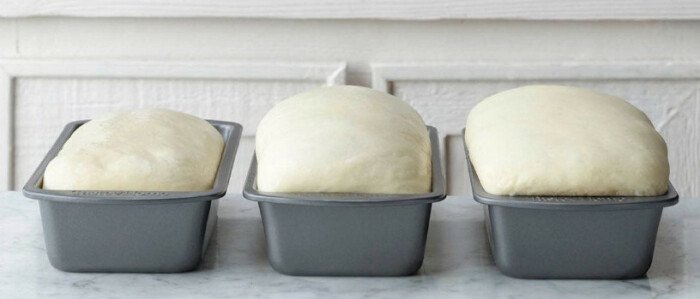Have you ever wondered about the unseen force that turns a humble mixture of flour, water, and a touch of sugar into a fragrant, risen loaf of bread? It’s time to uncover the fascinating science behind this miraculous transformation – all thanks to yeast. In this blog post, we’ll embark on how yeast makes bread rise.

Meet the Mighty Yeast
Yeast, the unsung hero of baking, belongs to the fungi kingdom and has been a trusted ally to bakers for centuries. The star of the show is Saccharomyces cerevisiae, a specific yeast strain celebrated for its remarkable ability to ferment sugars and convert them into carbon dioxide (CO2) and alcohol – the essential components responsible for bread’s rise and distinctive flavor.
The Fermentation Process
The yeast’s magic begins when it meets a blend of flour, water, and sometimes sugar in your dough. The yeast cells eagerly feast on the sugars, initiating a process known as fermentation. During fermentation, yeast breaks down these sugars into carbon dioxide (CO2) and alcohol. It’s the release of CO2 that creates those delightful air pockets in your bread, imparting its characteristic lightness.
The Role of Gluten
Now, let’s talk about gluten, the protein superhero in wheat flour. Gluten plays a pivotal role in trapping the CO2 gas produced by yeast. As yeast ferments and releases gas, the elastic gluten structure captures these gas bubbles, causing the dough to expand. This expansion is the secret behind bread’s iconic rise and its soft, airy texture.
Temperature Matters
Yeast behaves best within a specific temperature range, around 75 to 85°F (24 to 29°C). This is its comfort zone for optimum activity. At this temperature range, yeast thrives and produces CO2 at an optimal rate. Too hot or too cold, and yeast becomes sluggish or inactive, affecting the bread’s rise and flavor.
Types of Yeast
In the world of breadmaking, you’ll encounter various forms of yeast, each with its unique characteristics:
Active Dry Yeast
This yeast variety requires dissolution in warm water before use. It boasts a longer shelf life and remains a reliable choice for many bakers.
Instant Yeast
Also known as rapid-rise yeast, this type can be added directly to dry ingredients. It activates more swiftly and is an excellent choice for those seeking faster breadmaking.
Fresh Yeast
Sometimes referred to as cake yeast or compressed yeast, this form exists as a soft, moist block that should be crumbled and incorporated into other ingredients. Fresh yeast is highly perishable and best suited for frequent bakers.
The Proofing Process
After the dough has been mixed and the yeast has initiated fermentation, it’s time for the dough to rest and rise in a process known as “proofing.” During this phase, the dough continues to ferment and expand, enhancing its flavor and structure. The length of the proofing period can vary according to the recipe, but it’s a vital step in perfecting the bread’s taste and texture.
Yeast Beyond Bread
While yeast is renowned for its role in breadmaking, its applications extend far beyond the bakery. Yeast is a fundamental player in brewing, where it ferments beer, and in winemaking, where it transforms grape juice into wine. Additionally, yeast is a key contributor to the production of other fermented foods such as yogurt, cheese, and sauerkraut.
Conclusion
Understanding the science of yeast is a captivating journey into the realms of microbiology and culinary artistry. Grasping how yeast operates and comprehending its role in breadmaking can empower you to become a more skilled and appreciative baker.
So, the next time you savor a slice of freshly baked bread, take a moment to marvel at the intricate science behind its rise, all thanks to the miraculous yeast and its incredible ability to transform basic ingredients into a culinary masterpiece.


